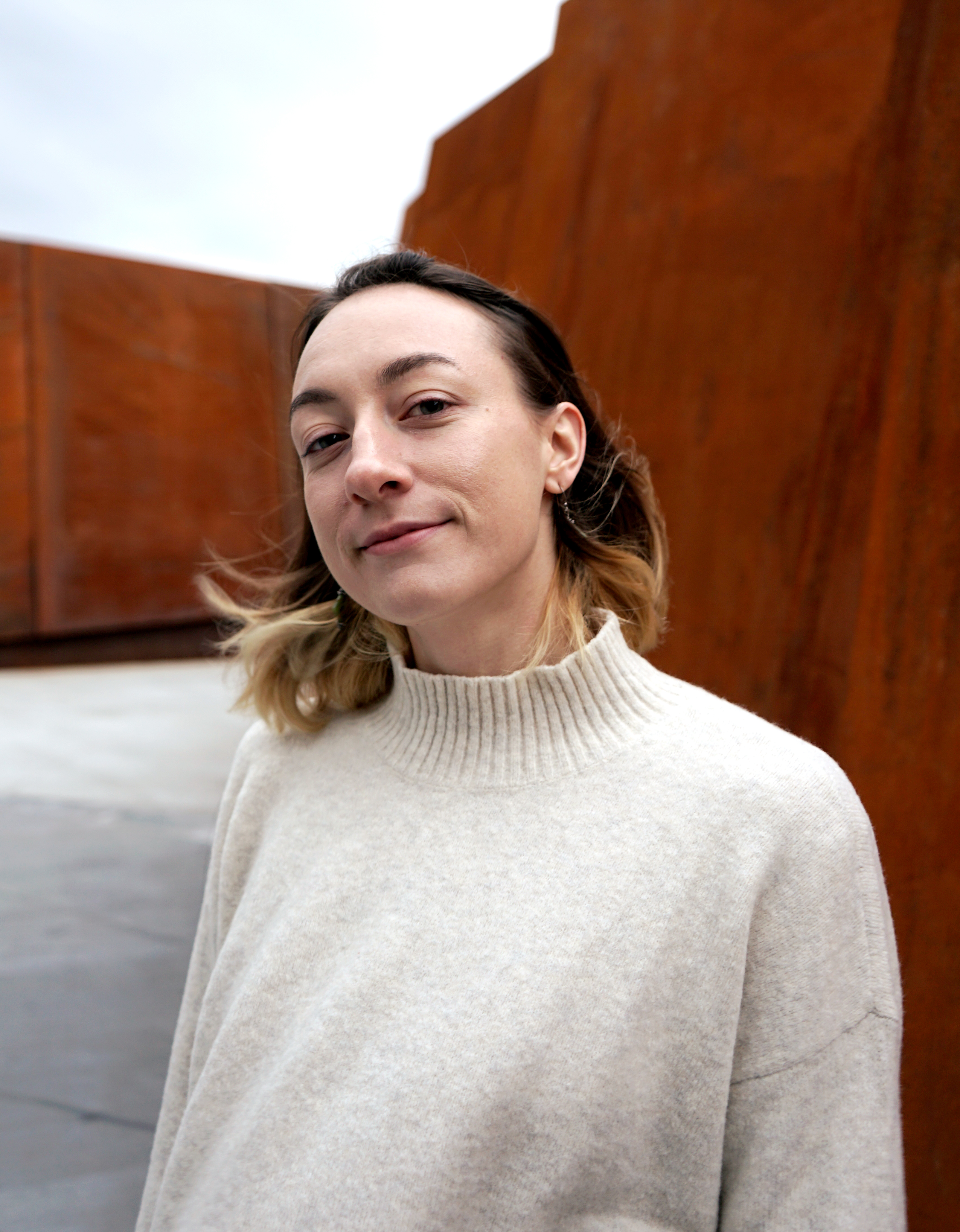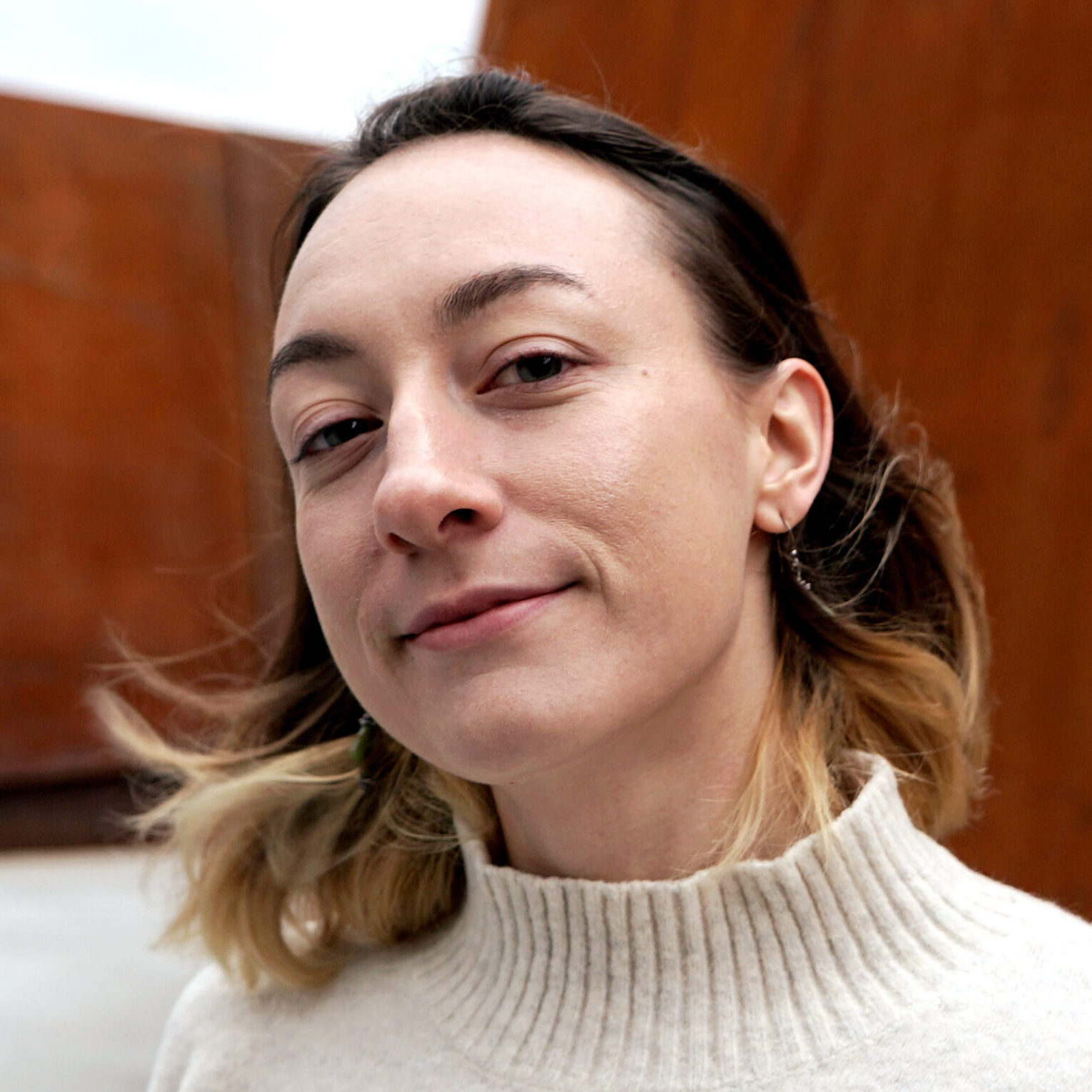
New York-based writer and designer Avery Robertson, Northeastern alumnus, has an impressive background in Architecture that includes studying abroad in France, Germany, and the Netherlands – and most recently, living and working in New York City. From both undergraduate and graduate classes along with work experience, Avery has identified a primary interest in the relationship between human ecology and large water systems in the context of landscape urbanism. We caught up with Avery, who graduated with a Bachelor of Science in Architecture and a Master of Design for Sustainable Urban Environments, to learn more about the world of freelancing and discuss how Architecture can influence a number of other disciplines. Read more below!
Tell us about current roles!
My jobs have ranged from editing text on ancient root bridges in India to arranging candles on Oprah’s table at the Statue of Liberty Museum opening gala. I’m still figuring out exactly what I want to do but my experience has prepared me for working and living in New York City.
I moved to New York in February to work as a copyeditor with Julia Watson on her forthcoming book Lo–TEK: Design by Radical Indigenism, being published by Taschen Press this month. Since the book, I have continued to work with her on additional projects, such as the La Luna Festival in Brooklyn this past June, and ideas for future writing projects. I have also been working at Stefan Beckman Studio as a project-based Graphic Designer, referred to me by a fellow alum of the Northeastern School of Architecture. This job is a 180 from my work on the book—as I am working on fashion shows, photo-shoot sets, retail stores, and pop-ups. Recently I worked on the Marc Jacobs fashion week show creating a memorable scene with hundreds of white chairs.
What has been a career or academic highlight for you?
Lo—TEK: Design by Radical Indigenism is Julia Watson’s first publication, and the culmination of her writing and research, seven years in the making. I was brought on as a copy editor and proofreader in February when the writing was still in word documents. This was an incredible project to work on. The book investigates how indigenous communities have been developing infrastructure for hundreds of years—working with nature and the environment, rather than against it, as much of contemporary infrastructure and architecture does. Covering case studies such as the Khasi root bridges in Meghalaya to the Waitiwina Dams of the Enawene-nawe people in Brazil, exemplified how these communities have developed a successful nature-based design. The hope is that the book will be an important contribution to the growing nature-based design movement, emphasizing the innovativeness of indigenous technology, and how designers, planners, and architects can learn from these technologies for climate resilience.
The book is aligned with my academic background: critical writing and sustainability, but still a different world from my job that sustains the excitement for fashion I’ve had since a teenager. At Stefan Beckman Studio, I work primarily as a graphic designer, producing and managing graphics, but being a small studio we often can work outside our designated role. Recently, we designed and helped build The Coach Originals Madison Ave popup. The one-week store was covered in wood panels with printed archive images. The work is fast-paced, and most of our projects are only ‘up’ for a short time: a fashion show is weeks of work for about an hour of runtime, and the popups only last a few days. This pace leads to a great diversity of projects in any given month.
Are there any standout projects you’re currently working on?
In my free time, I’ve been working on further developing projects that I started during my master’s. I had a good start but wanted to put more work in refining and developing a better conclusion to the projects. In my thesis project, I used maps, writing, and photography to explore how human-defined boundaries (legal, cartographic, etc) interact with nonhuman boundaries and land composition in Great Esker Park, a park south of Boston. We worked with GIS a lot in this program. My thesis was a response questioning what these boundaries meant and who was impacted, as I explored ideas such as bird habitats, pollution, and historical preservation. I felt the project ended incomplete and I’m still trying to figure out what I need to do next.
You are a Double Husky! Tell us about your experience at Northeastern.
Northeastern was full of interesting classes with enthusiastic professors. I was able to meet people from all over the world and of all different majors accompanied by the resources to dive into what I wanted to study.
I did my undergrad in Architectural Studies with a concentration on sustainable design and a minor in art history, and immediately entered the Sustainable Urban Environments (SUEN) masters program. The SUEN program was the final year of my undergrad, it let me really explore and expand on a lot of topics and technical skills I had been developing up to that point.
If I could go back I may have done things differently. In choosing Architectural Studies, which is not an accredited degree, rather than an accredited track, I was able to take the essential architecture courses while also pursuing interests in other departments, but there were some trade-offs. I was aware that the unaccredited degree would make my job hunt harder, but after a year I’ve learned just how much harder the job hunt, getting licensed, and applying to additional masters programs in this field is without an accredited degree. Despite this, I appreciate that I was able to study a diverse range of topics in my programs and am happy with how things have played out.
Did you study abroad?
In my master’s, I decided I wanted to go on the Sustainable Urban Transportation dialogue to the Netherlands and ended up taking the Traffic Engineering course with Professor Peter Furth the prior semester. Another SUEN student and I were frequently called on as the “landscape architects” in the class when a related topic was brought up. I wasn’t great at math—an important part of engineering—but I loved that class and met a lot of great people.
I studied abroad three times while at Northeastern and if I could I would have gone even more.
One of my studies abroad was in Fontainebleau, France and I highly recommend anyone studying architecture to apply to this program. I spent one month in a town south of Paris studying architecture without computers. We had a studio in the Chateau and sketched in the gardens. The students were from all over the world and we, the architecture students, shared free time with classical music students who would perform in the chateau halls. It was a great experience, not only being abroad but also getting the perspective of architecture without the Rhino and Revit—and with such a global community.
How did your co-ops and classwork help prepare you for where you are now?
I first worked in the marketing department at a cruise ship and theater design office, and then I worked as the Common Boston Coordinator at the Boston Society of Architects—although neither were CAD-based design jobs. I loved working on the Common Boston event: a one-weekend open house for the city described as an open-house architecture festival that unlocks the doors to dozens of Boston’s architecturally, culturally, and historically significant sites, encouraging residents and tourists to consider why design matters, while tapping into unique stories that illuminate our vibrant communities. This job showed me that there were opportunities to be in the world of architecture beyond being a designer. I loved being able to research the history of the city’s architecture and learning how to bring that to the public because it’s a different side to architecture from what I first learned in school. Because of this, I have looked into working within marketing for architecture firms as a possible career path.
What sparks your passion for Architecture & Design?
I’ve had a conversation with many architecture friends that goes like this:
I can’t imagine doing anything else, everything is architecture.
What drew me to architecture is that it is interdisciplinary, it involves an emotional impact, and it is a way to understand how the world works. As someone who has a lot of interest in seemingly unrelated fields, such as writing, traffic engineering, climate science, and graphic design—architecture ties all of it together. My work in each of these fields benefits each other, such as the road design in traffic engineering benefiting from landscape architecture, or architecture benefiting from knowing environmental impacts. I tend to lean towards the environmentally conscious elements of design and that is another way in which I can tie multiple fields together with a common goal.
According to the 2017 United Nations Environment Program Report, buildings, and their construction make up 36 percent of global energy use and 39 percent of energy-related carbon dioxide emissions annually—that’s a big deal. I think every element of a design can be put through the environmental-impact lens and be improved. With climate marches and influential activists like Greta Thunberg, and publications like Lo—TEK, people are becoming more conscious of the human environmental impact and how important it is.
Architecture is ever-present in our lives. It’s where we live, where we work, and it is constantly shaping us. In my approach to studying architecture, I consider that there is an underlying reason for everything, that nothing just is and everything can be dissected, understood, and amplified or amended. This approach helps create a well-informed and intelligent design.
Good design is effective in directing attention and being approachable, but when that is paired with an important message that’s when the design is great.
We can’t wait to see what you work on next, Avery! To learn more about Avery’s work, visit averyrobertson.com


